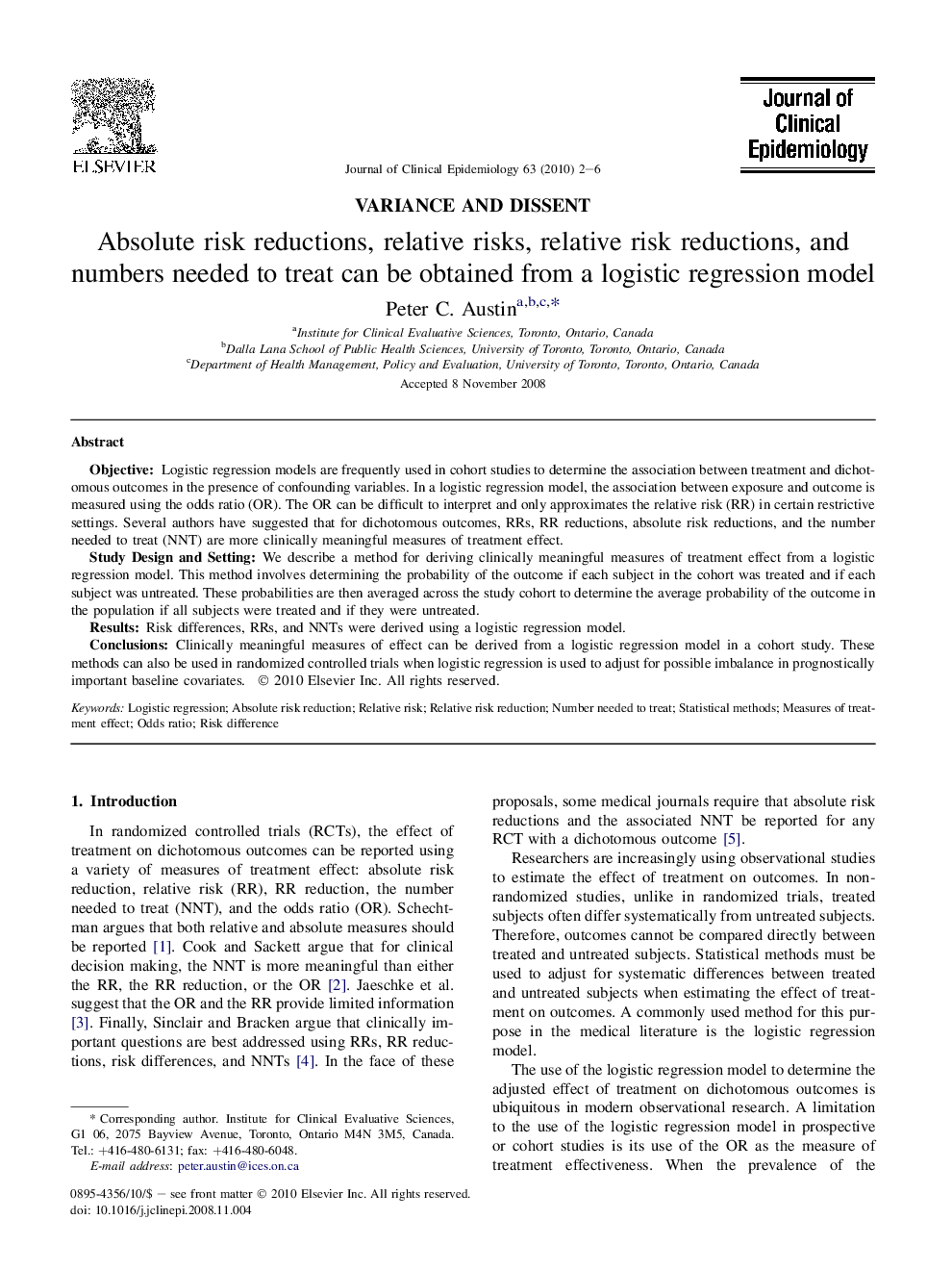| Article ID | Journal | Published Year | Pages | File Type |
|---|---|---|---|---|
| 1083033 | Journal of Clinical Epidemiology | 2010 | 5 Pages |
ObjectiveLogistic regression models are frequently used in cohort studies to determine the association between treatment and dichotomous outcomes in the presence of confounding variables. In a logistic regression model, the association between exposure and outcome is measured using the odds ratio (OR). The OR can be difficult to interpret and only approximates the relative risk (RR) in certain restrictive settings. Several authors have suggested that for dichotomous outcomes, RRs, RR reductions, absolute risk reductions, and the number needed to treat (NNT) are more clinically meaningful measures of treatment effect.Study Design and SettingWe describe a method for deriving clinically meaningful measures of treatment effect from a logistic regression model. This method involves determining the probability of the outcome if each subject in the cohort was treated and if each subject was untreated. These probabilities are then averaged across the study cohort to determine the average probability of the outcome in the population if all subjects were treated and if they were untreated.ResultsRisk differences, RRs, and NNTs were derived using a logistic regression model.ConclusionsClinically meaningful measures of effect can be derived from a logistic regression model in a cohort study. These methods can also be used in randomized controlled trials when logistic regression is used to adjust for possible imbalance in prognostically important baseline covariates.
